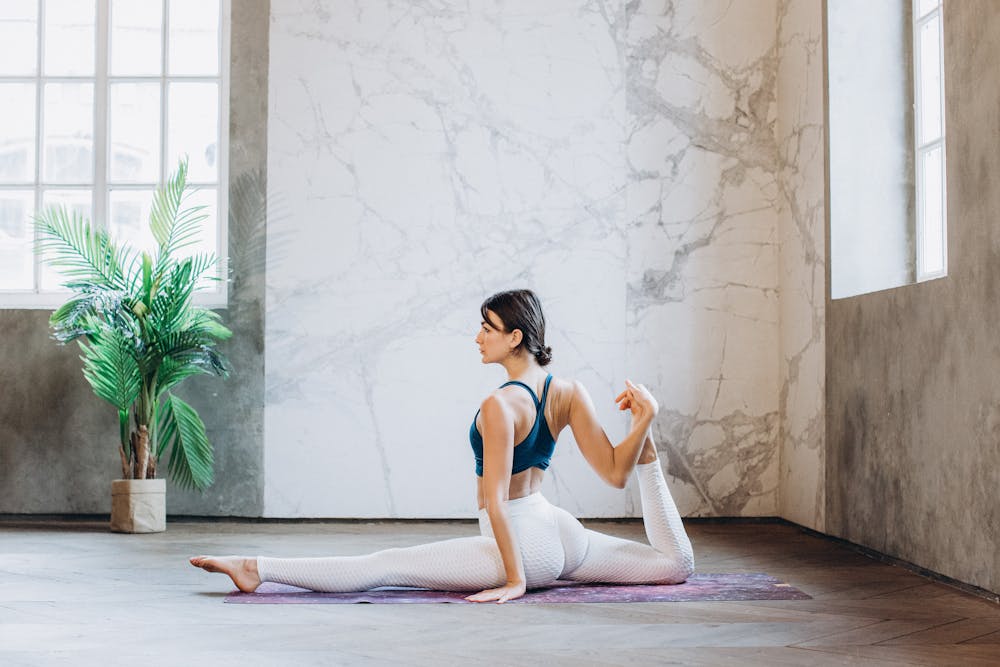As I explore the realm of functional fitness, I’m struck by its practical approach to movement and its potential to enhance everyday activities and overall well-being. Unlike traditional gym workouts focused solely on building muscle or burning calories, functional fitness emphasizes movements that mimic real-life tasks and improve functional strength, mobility, and balance.
 One of the most appealing aspects of functional fitness is its versatility. It doesn’t require fancy equipment or hours spent in the gym. Instead, it focuses on using bodyweight exercises, resistance bands, kettlebells, and other simple tools to perform movements that translate directly to activities of daily living.
One of the most appealing aspects of functional fitness is its versatility. It doesn’t require fancy equipment or hours spent in the gym. Instead, it focuses on using bodyweight exercises, resistance bands, kettlebells, and other simple tools to perform movements that translate directly to activities of daily living.
 One of the foundational principles of functional fitness is the emphasis on compound movements that engage multiple muscle groups simultaneously. Exercises like squats, lunges, deadlifts, push-ups, and rows not only build strength but also improve coordination, stability, and flexibility – all essential components of functional fitness.
One of the foundational principles of functional fitness is the emphasis on compound movements that engage multiple muscle groups simultaneously. Exercises like squats, lunges, deadlifts, push-ups, and rows not only build strength but also improve coordination, stability, and flexibility – all essential components of functional fitness.
 Another key aspect of functional fitness is its focus on movement patterns rather than isolated muscle groups. Rather than performing bicep curls or leg extensions in isolation, functional exercises incorporate dynamic movements that challenge the body in a more holistic way. For example, a squat-to-press exercise not only strengthens the legs and shoulders but also improves coordination and balance.
Another key aspect of functional fitness is its focus on movement patterns rather than isolated muscle groups. Rather than performing bicep curls or leg extensions in isolation, functional exercises incorporate dynamic movements that challenge the body in a more holistic way. For example, a squat-to-press exercise not only strengthens the legs and shoulders but also improves coordination and balance.
 But perhaps the most compelling aspect of functional fitness is its applicability to everyday life. Whether you’re lifting groceries, playing with your kids, or carrying luggage, functional fitness helps improve your ability to perform these tasks safely and efficiently. By training the body to move in a natural and functional way, you’ll not only enhance your physical capabilities but also reduce the risk of injury and improve overall quality of life.
But perhaps the most compelling aspect of functional fitness is its applicability to everyday life. Whether you’re lifting groceries, playing with your kids, or carrying luggage, functional fitness helps improve your ability to perform these tasks safely and efficiently. By training the body to move in a natural and functional way, you’ll not only enhance your physical capabilities but also reduce the risk of injury and improve overall quality of life.
 So, how can you incorporate functional fitness into your daily routine? It’s simpler than you might think. Start by incorporating bodyweight exercises like squats, lunges, push-ups, and planks into your workout routine. These can be done anytime, anywhere, with little to no equipment required.
So, how can you incorporate functional fitness into your daily routine? It’s simpler than you might think. Start by incorporating bodyweight exercises like squats, lunges, push-ups, and planks into your workout routine. These can be done anytime, anywhere, with little to no equipment required.
 You can also incorporate functional movements into everyday activities. For example, instead of taking the elevator, opt for the stairs. Or, instead of driving to the store, consider walking or biking if it’s feasible. Look for opportunities throughout the day to move your body in ways that feel natural and enjoyable.
You can also incorporate functional movements into everyday activities. For example, instead of taking the elevator, opt for the stairs. Or, instead of driving to the store, consider walking or biking if it’s feasible. Look for opportunities throughout the day to move your body in ways that feel natural and enjoyable.
 In addition to strength training, don’t forget the importance of mobility and flexibility. Incorporate stretching, yoga, or mobility exercises into your routine to improve range of motion and prevent stiffness and discomfort.
In addition to strength training, don’t forget the importance of mobility and flexibility. Incorporate stretching, yoga, or mobility exercises into your routine to improve range of motion and prevent stiffness and discomfort.
 Ultimately, the goal of functional fitness is to enhance your ability to move with ease and confidence in all aspects of life. By incorporating functional movements into your daily routine, you’ll not only improve your physical fitness but also enhance your overall quality of life. So why wait? Start moving today and reap the benefits of functional fitness for years to come.
Ultimately, the goal of functional fitness is to enhance your ability to move with ease and confidence in all aspects of life. By incorporating functional movements into your daily routine, you’ll not only improve your physical fitness but also enhance your overall quality of life. So why wait? Start moving today and reap the benefits of functional fitness for years to come.




